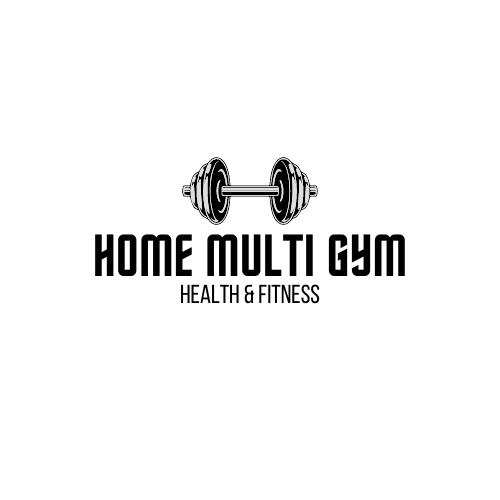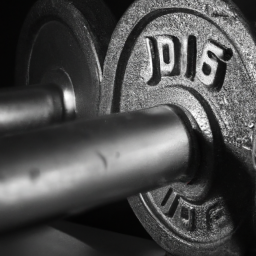If you’re wondering about the maintenance requirements for a home multi-gym, you’ve come to the right place! Keeping your multi-gym in good condition is important to ensure its longevity and safe usage. In this article, we’ll explore the different aspects of maintaining a home multi-gym, from cleaning and lubricating to inspecting and tightening components. By following these maintenance tips, you’ll be able to enjoy your multi-gym for years to come without any issues.
Curious to know more about how to properly maintain your home multi-gym? In this article, we’ll dive deeper into the various maintenance requirements that will help keep your multi-gym in top shape. From cleaning and lubricating the different parts to inspecting and tightening the components, we’ll provide you with easy-to-follow guidelines. By following these maintenance tips, you can ensure a longer lifespan for your multi-gym and maximize your workouts. So, keep reading to learn all about the proper care and maintenance needed for a home multi-gym! Maintaining your home multi-gym is crucial to ensure its longevity and durability. Regular maintenance not only keeps the equipment in optimal condition but also optimizes its performance and safety. In this article, we will explore the various maintenance tasks that you need to perform to keep your multi-gym in top-notch shape.
Importance of Maintenance
Ensuring Longevity and Durability
Regular maintenance is essential to ensure the longevity and durability of your home multi-gym. By following a comprehensive maintenance routine, you can prevent unnecessary wear and tear, which can lead to costly repairs or replacement in the long run. By taking care of your multi-gym, you can ensure that it lasts for many years, providing you with endless exercise opportunities.
Optimizing Performance and Safety
Another key benefit of maintenance is optimizing the performance and safety of your home multi-gym. Regular cleaning, lubrication, and inspection of the equipment help to identify any potential issues or faults, allowing you to address them promptly. By maintaining the equipment, you can ensure that it functions smoothly and safely, minimizing the risk of accidents or injuries during your workouts.
Cleaning and Dusting
Cleaning External Surfaces
One of the most basic maintenance tasks for your home multi-gym is cleaning the external surfaces regularly. Use a mild detergent or gym equipment cleaner and a soft cloth to wipe down the surfaces, removing any sweat, dirt, or residue that may have accumulated. Pay attention to the handles, seats, and any other areas that come into direct contact with your body during workouts. Regular cleaning not only keeps your multi-gym looking good but also prevents the buildup of bacteria or germs.
Dusting Equipment Regularly
Apart from cleaning the external surfaces, it’s also important to regularly dust the equipment. Dust and debris can accumulate in hard-to-reach areas, such as underneath the seat or around the pulleys, affecting the performance of your multi-gym. Use a soft brush or a vacuum cleaner with a brush attachment to remove any dust or debris from these areas. Dusting your equipment regularly ensures that it operates smoothly and prevents any potential damage caused by the accumulation of dirt.
Lubrication
Applying Lubricants to Moving Parts
Lubrication is a crucial maintenance task to keep your home multi-gym functioning optimally. The moving parts of the equipment, such as the pulleys, cables, and joints, require regular lubrication to prevent excessive friction and wear. Refer to the manufacturer’s guidelines for the recommended lubricant and apply it to the designated areas. This will not only ensure the smooth movement of the various components but also prevent any potential damage or breakdowns caused by friction.
Preventing Wear and Tear
Regularly lubricating the moving parts of your multi-gym also helps prevent wear and tear. When the components are properly lubricated, they operate more efficiently, reducing the stress on the equipment. This, in turn, helps to prolong its lifespan and minimize the need for costly repairs. By including lubrication as part of your maintenance routine, you can keep your multi-gym in excellent condition for years to come.
Inspecting for Damage
Checking Cables and Pulleys
Regular inspection of the cables and pulleys is essential to ensure the safety and functionality of your home multi-gym. Look for any signs of fraying, cracking, or damage to the cables. If you notice any issues, it’s important to address them immediately by either repairing or replacing the affected cables. Similarly, check the pulleys for any signs of wear or misalignment. Make sure that the pulleys are rotating smoothly and that there are no obstructions or deformities that may hinder their performance.
Examining Welds and Joints
Another important aspect of the inspection is examining the welds and joints of your multi-gym. Look for any signs of cracks, loose connections, or rust. Properly welded joints ensure the stability and safety of the equipment during use. If you identify any issues with the welds or joints, it’s important to contact the manufacturer or a professional for assistance. Ignoring or neglecting these issues can lead to accidents or injuries.
Tightening and Adjusting
Checking Bolts and Nuts
Regularly checking and tightening the bolts and nuts of your home multi-gym is crucial to ensure its stability and safety. Over time, the vibrations and movements during workouts can cause these fasteners to become loose. Use a wrench or a socket set to inspect and tighten the bolts and nuts, ensuring that they are secure. Loose fasteners can compromise the stability of the equipment and increase the risk of accidents. By including this task in your maintenance routine, you can minimize any potential hazards and create a safer workout environment.
Adjusting Tension and Resistance
In addition to checking the bolts and nuts, it’s important to regularly adjust the tension and resistance settings of your multi-gym. Over time, these settings may need to be readjusted to accommodate your fitness level or personal preferences. Follow the manufacturer’s guidelines for making these adjustments, ensuring that the equipment is set to the appropriate tension and resistance. By regularly checking and adjusting these settings, you can optimize your workouts and ensure that you are getting the desired level of challenge from your multi-gym.
Electronics Maintenance
Calibrating and Testing Display Panels
If your home multi-gym includes electronic display panels, it’s important to calibrate and test them regularly. Follow the manufacturer’s instructions for calibrating the display panels to ensure accurate readings of time, distance, calories burned, etc. Additionally, perform periodic tests to verify the functionality of the panels. Check if all the buttons and functions are working properly. If you notice any issues, contact the manufacturer or a professional for assistance in resolving them.
Replacing Batteries
If the electronic components of your multi-gym rely on batteries, make sure to replace them regularly. Weak or dead batteries can affect the performance and accuracy of the equipment. Keep spare batteries on hand and replace them as soon as you notice any signs of battery failure. Regularly replacing batteries prevents any disruptions to your workouts and ensures that the electronic components function properly.
Upholstery Care
Cleaning and Conditioning Foam Pads
The upholstery of your home multi-gym, such as the foam pads on the seats or backrests, requires regular cleaning and conditioning. Use a mild detergent or upholstery cleaner to remove any sweat, dirt, or stains that may have accumulated on the pads. Gently scrub the surface with a soft brush or cloth, then rinse thoroughly and allow it to dry completely. Additionally, consider using a conditioner or protector to prolong the lifespan and maintain the softness of the upholstery. Regular maintenance of the foam pads ensures a clean and comfortable workout experience.
Inspecting for Tears or Frays
During the cleaning and conditioning process, it’s important to inspect the upholstery for any tears, frays, or signs of damage. If you notice any issues, such as a small tear, it’s best to address it immediately by repairing or replacing the affected area. Ignoring or neglecting these issues can lead to further damage or compromise the comfort and safety of the equipment. Regular inspections of the upholstery help to identify any potential issues early on and prevent further damage.
Checking Weight Stacks
Ensuring Proper Alignment
Weight stacks are a common feature in home multi-gyms, and ensuring their proper alignment is crucial for the equipment’s functionality and safety. Regularly check if the weights are properly aligned and evenly distributed. Any misalignment can affect the balance and stability of the machine during workouts. If you notice any issues with the weight stacks, such as misaligned plates or jammed weights, contact the manufacturer or a professional for assistance.
Adding or Removing Weights as Needed
Another maintenance task for the weight stacks is adding or removing weights as needed. As you progress in your fitness journey, you may find that you need to adjust the resistance levels of your multi-gym. Follow the manufacturer’s instructions for safely adding or removing weights to ensure that they are secure. Improper handling of the weight stacks can compromise the equipment’s safety and functionality. By regularly evaluating and adjusting the weights, you can tailor your workouts to your specific goals and fitness level.
Safety Inspections
Verifying Stability and Balance
Regular safety inspections are essential to ensure the stability and balance of your home multi-gym. Check if the equipment is properly leveled and that all the components are securely in place. Look for any signs of wobbling or instability during use. If you notice any issues, such as an unsteady base or loose connections, it’s important to address them immediately. A properly stabilized multi-gym reduces the risk of accidents or injuries and provides a safe workout environment.
Testing Safety Features
In addition to verifying stability and balance, it’s crucial to regularly test the safety features of your home multi-gym. Check if the safety pins, straps, and locks are functioning properly. Test the emergency stop button or any other safety mechanisms included with your equipment. These features are designed to protect you during your workouts, and regular testing ensures their effectiveness. If you identify any issues with the safety features, contact the manufacturer or a professional for assistance in resolving them.
Conclusion
Regular maintenance is key to prolonging the lifespan and functionality of your home multi-gym. By following a comprehensive maintenance routine, you can ensure optimal performance, safety, and enjoyment of your fitness equipment. From cleaning and lubricating to inspecting for damage and testing safety features, each maintenance task plays an important role in maximizing the longevity and durability of your multi-gym. By dedicating a little time and effort to maintenance, you can continue to reap the benefits of your home gym for years to come. So, make sure to incorporate these maintenance requirements into your regular workout routine and keep your home multi-gym in top-notch condition.

